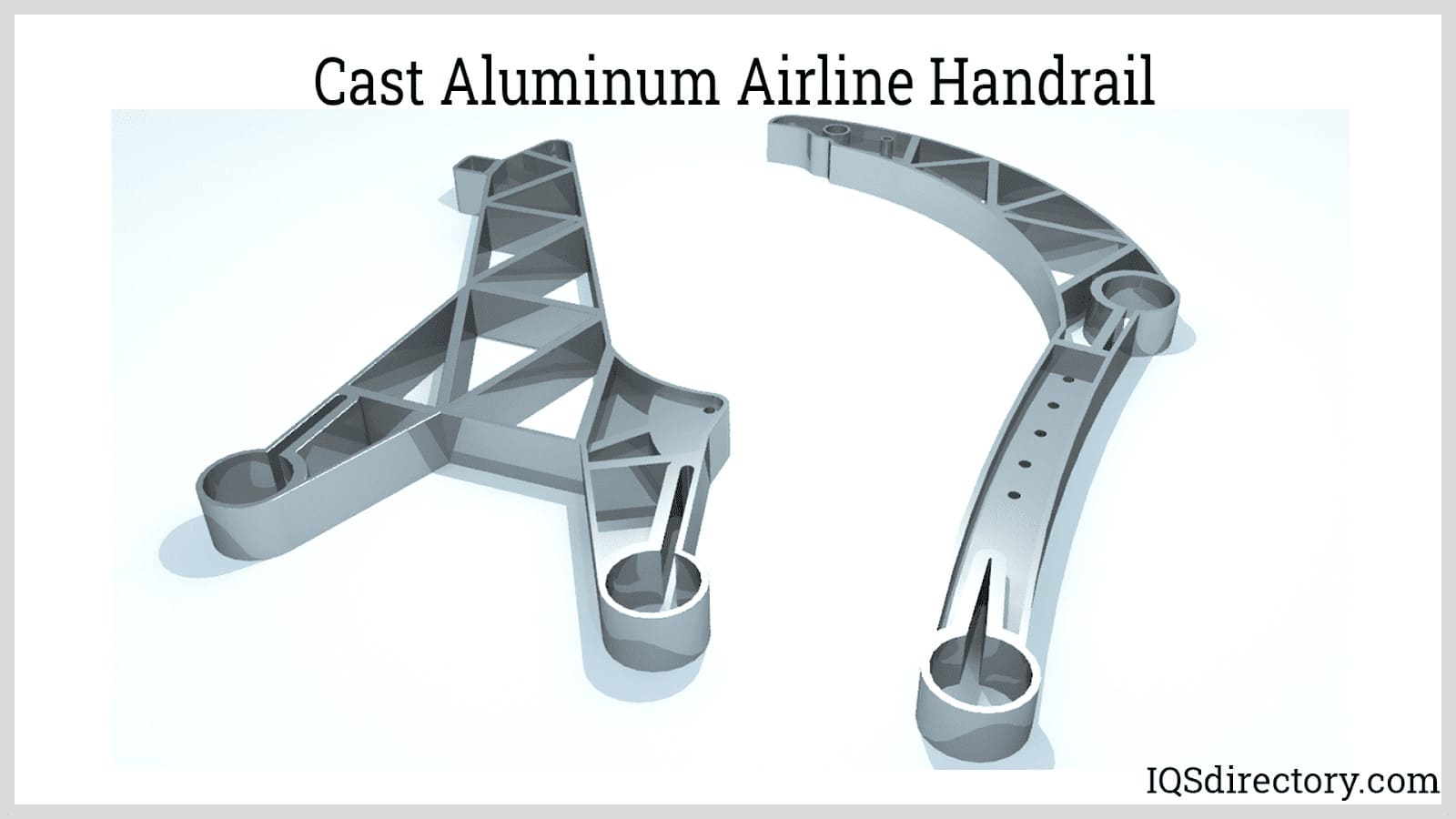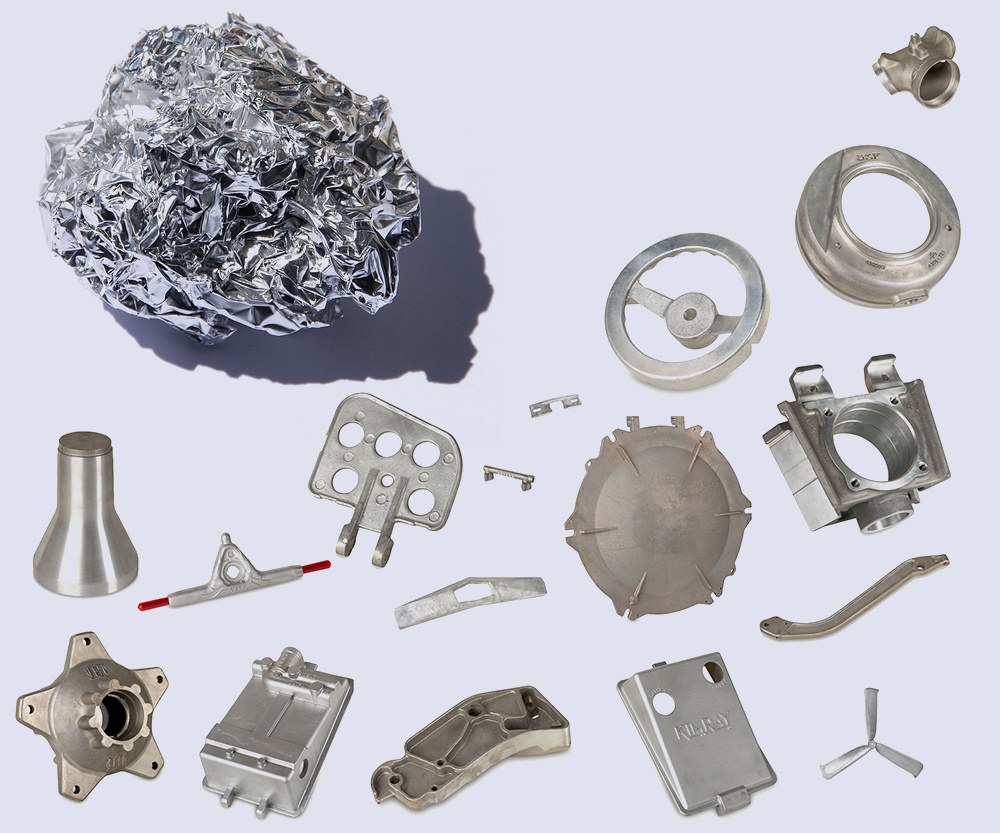The Future of Industrial Design With a Next-Gen Aluminum Casting Manufacturer
A Deep Dive Into the Aluminum Casting Refine: From Layout to Final Product
The light weight aluminum Casting process encompasses several critical phases, each calling for precision and know-how. It begins with the design stage, where principles advance right into comprehensive specifications. The prep work of molds complies with, employing various casting strategies. After melting and pouring, the cooling phase figures out the last properties of the light weight aluminum. Nevertheless, the journey does not end there; ending up processes play a significant function in achieving top quality requirements. What happens following in this intricate procedure?
Understanding Light Weight Aluminum Casting
Aluminum Casting is a critical procedure in manufacturing that entails pouring molten light weight aluminum into a mold and mildew to create different shapes and parts. This method is preferred for its ability to create intricate styles with superb dimensional accuracy. The process begins with picking premium light weight aluminum alloys, which are then thawed at raised temperatures. As soon as in a liquid state, the aluminum is thoroughly put into molds, which can be made from sand, steel, or other materials, depending upon the wanted end product.
Cooling occurs as the molten aluminum strengthens, creating the wanted shape. After cooling, the castings are eliminated from the mold and mildews and undergo ending up procedures such as machining or surface treatment to enhance their residential or commercial properties and appearance. Comprehending light weight aluminum Casting not just highlights its value in engineering and manufacturing but also emphasizes its adaptability in generating light-weight, durable components for various industries, including automobile, aerospace, and durable goods.
The Layout Refine: From Principle to CAD
The layout procedure for light weight aluminum Casting starts with preliminary idea advancement, where ideas are transformed into substantial requirements. Following this phase, CAD modeling methods are utilized to produce precise digital depictions of the layouts. This change from idea to CAD is vital for making sure accuracy and feasibility in the Casting process.
First Principle Advancement
Launching the style process for aluminum Casting involves changing abstract concepts into substantial ideas. This phase is essential, as it prepares for successful item advancement. Designers collaborate with stakeholders and designers to define the functional needs and aesthetic elements of the spreading. Brainstorming sessions frequently create several ideas, which are after that reviewed for expediency, cost-effectiveness, and manufacturability. Sketches and initial models might be produced to visualize prospective designs. Responses from team participants and clients is essential in improving these ideas. Repetitive discussions assist to identify prospective obstacles, making certain that the final layout lines up with both technological specs and customer needs. Inevitably, this phase establishes the phase for the shift from idea to even more comprehensive electronic representations.
CAD Modeling Techniques
As the style procedure shifts from first concepts to thorough representations, CAD modeling techniques end up being important devices for designers and designers. These strategies enable the production of exact, scalable digital models that precisely mirror the intended physical product. Typical methods include 3D strong modeling, surface modeling, and parametric style, each offering one-of-a-kind capabilities for different job needs. Designers use software program like AutoCAD, SolidWorks, and CATIA to refine designs, imitate performance, and determine potential problems before manufacturing. The combination of CAD with various other innovations, such as limited element evaluation (FEA), boosts the style process even more by anticipating product habits under stress and anxiety. Inevitably, reliable CAD modeling streamlines communication amongst staff member and improves the total performance of the light weight aluminum Casting procedure.
Preparing the Mold And Mildew: Sand, Pass Away, and Financial Investment Spreading
When preparing mold and mildews for aluminum casting, the selection of technique substantially affects the last product's quality and accuracy. 3 main methods are typically used: sand spreading, pass away casting, and investment spreading.
Sand Casting involves creating a mold and mildew from sand, which is flexible and economical, making it ideal for big parts and complex geometries. This technique, however, might generate a rougher surface finish compared to various other techniques.
Pass away casting uses steel molds, making it possible for high-volume manufacturing and exceptional dimensional precision. This technique is excellent for creating intricate layouts with smooth surfaces and limited tolerances however requires higher in advance expenses as a result of mold and mildew construction.
Investment spreading, additionally called lost-wax spreading, offers remarkable precision and surface area finish, making it suitable for detailed components. This approach involves producing a wax pattern, which is covered in ceramic, enabling for great detail throughout the Casting process. Each approach has its advantages, affecting the spreading's applications and features.
Melting and Pouring Aluminum: Strategies and Devices
In the light weight aluminum Casting procedure, effective melting and putting strategies are crucial for attaining top quality outcomes. Numerous melting techniques and specialized putting tools play a considerable function in ensuring optimal fluidness and temperature level control - Aluminum Casting Manufacturer. Understanding these basics is important for both amateur and skilled foundry experts
Thawing Strategies Review
A variety of melting techniques are utilized in the light weight aluminum Casting procedure, each customized to details applications and production ranges. Common methods include crucible melting, where aluminum is warmed in a ceramic or steel container, frequently suitable for small batches. Induction melting utilizes magnetic fields to warm aluminum rapidly and successfully, perfect for bigger manufacturing demands. Electric arc heaters give a high-temperature setting, making them appropriate for reusing aluminum scrap. In addition, rotating heating systems use a continual melting procedure, improving efficiency. Each method has its advantages, such as energy performance, melting speed, and material top quality, guaranteeing that makers can choose the most appropriate method based on their operational requirements and desired outcomes in the Casting procedure.
Pouring Equipment Essentials
Complying with the melting process, reliable putting equipment plays a substantial function in guaranteeing the effective transfer of molten light weight aluminum into mold and mildews. Key components consist of ladles, pouring mugs, and automated pouring equipments. Ladles, usually made of heat-resistant products, are developed to hold and move molten aluminum securely. Putting mugs enhance control throughout the transfer, promoting a consistent pour to minimize turbulence and oxidation. Automated putting devices are significantly popular, assuring consistent flow prices and reducing human error. These makers can be set for precision, enhancing casting top quality. Additionally, temperature surveillance devices are important to guarantee the molten light weight aluminum remains within the suitable temperature range, additional boosting the quality of the final cast item. Correct selection and upkeep of putting equipment are important for performance and safety.

Cooling and Solidification: Changing Liquid to Solid
Cooling and solidification play a vital role in the light weight aluminum Casting process, as they determine the last residential properties of the cast steel. After pouring, the liquified aluminum begins to shed warm, shifting from fluid to solid. This cooling stage is vital, as it influences mechanical buildings such as microstructure, strength, and ductility. The rate of cooling can differ based on aspects such as mold material, density, and environmental problems. Rapid cooling might result in a finer grain framework, boosting stamina, while slower air conditioning can lead to coarser grains, influencing ductility.
Additionally, consistent air conditioning is important to protect against defects such as bending or cracking. As the metal solidifies, the development of dendrites takes place, which are tree-like structures that influence the total integrity of the casting. Recognizing the air conditioning and solidification dynamics allows designers and shop employees to enhance the process, ensuring that the end product satisfies the essential requirements and top quality requirements.

Completing Processes: Machining, Coating, and Inspection
Ending up processes are crucial in refining light weight aluminum castings to fulfill rigid specifications and boost performance. These processes commonly include machining, covering, and examination, each playing an important role in accomplishing the desired high quality.
Machining involves getting rid of excess material from the Casting to obtain precise measurements and surface area finishes. Methods such as milling, transforming, and grinding are typically used to guarantee that the final product satisfies layout tolerances.
Finish offers to safeguard the light weight aluminum surface from environmental variables, enhancing rust resistance and aesthetic charm. Alternatives consist of anodizing, powder covering, and paint, each offering distinctive Aluminum Casting Manufacturer benefits depending upon the application.
Assessment is important to confirm that the ended up castings satisfy top quality criteria. Methods such as visual assessment, dimensional checks, and non-destructive screening are employed to spot any type of issues. Together, these completing procedures assure that aluminum spreadings are reputable, sturdy, and all set for their desired applications.
Applications of Light Weight Aluminum Castings in Various Industries

Additionally, the durable goods field incorporates light weight aluminum spreadings in items like kitchenware and devices, maximizing their thermal conductivity and toughness. The construction industry utilizes aluminum castings in home window frameworks, doors, and decorative aspects, improving aesthetic appeals while preserving capability. In addition, the aquatic sector counts on light weight aluminum spreadings for boat parts, where resistance to saltwater corrosion is vital. Generally, light weight aluminum spreadings supply ingenious options across different applications, making them important in contemporary manufacturing procedures.
Often Asked Inquiries
What Are the Ecological Influences of Light Weight Aluminum Spreading?
The ecological effects of aluminum Casting consist of energy-intensive manufacturing, greenhouse gas exhausts, and prospective water contamination. Furthermore, mining bauxite for aluminum adds to environment damage, while recycling efforts can minimize some adverse results.
Just How Does Aluminum Casting Contrast to Various Other Metal Casting Processes?
Light weight aluminum casting normally provides advantages like light-weight residential properties and rust resistance compared to other steel Casting processes. However, it might have restrictions in strength and temperature level resistance, making its suitability based on details application demands.
What Safety And Security Safety Measures Are Required Throughout Aluminum Casting?
Throughout aluminum casting, safety and security precautions consist of using safety gear, making certain appropriate ventilation, keeping devices, and adhering to stringent protocols to deal with molten metal. These actions aim to reduce threats such as burns, inhalation of fumes, and tools malfunctions.
Can Light Weight Aluminum Castings Be Recycled After Use?
Light weight aluminum spreadings can indeed be recycled after usage. The recycling process preserves the material's homes, making it a lasting option. This practice significantly decreases waste and saves power, promoting environmental obligation in making industries.
What Prevail Issues in Aluminum Castings and Their Causes?
Common flaws in aluminum spreadings include porosity, cool shuts, and contraction - Aluminum Casting Manufacturer. These issues commonly emerge from inadequate melting temperatures, incorrect mold and mildew layout, and inadequate cooling prices, influencing the total top quality and efficiency of the final product
Aluminum Casting is a vital procedure in making that entails pouring molten aluminum right into a mold and mildew to produce different forms and elements. The style process for aluminum Casting begins with initial concept development, where concepts are changed into concrete specs. Starting the design process for aluminum Casting entails changing abstract concepts right into substantial principles. In the light weight aluminum Casting process, efficient melting and pouring techniques are critical for achieving high-quality outcomes. A selection of melting methods are used in the light weight aluminum Casting process, each tailored to specific applications and manufacturing scales.